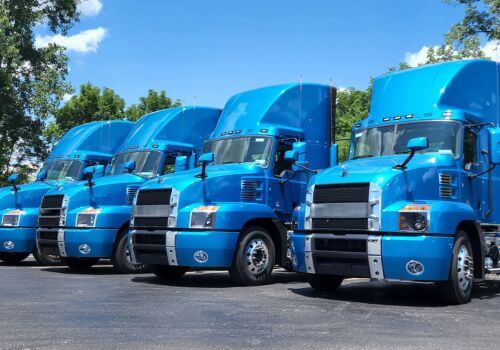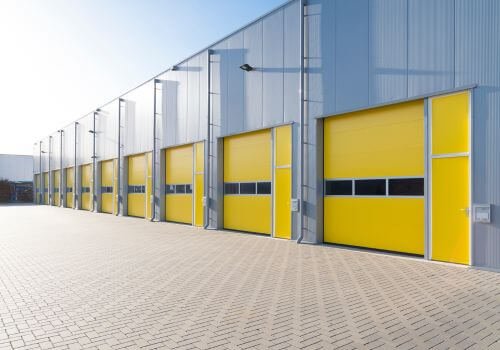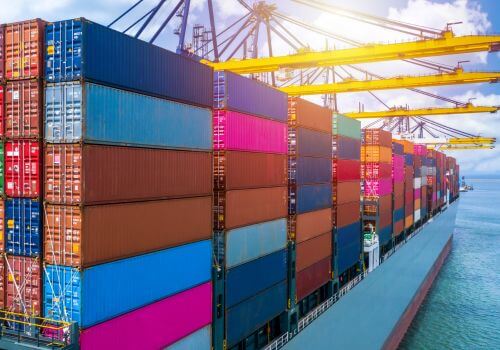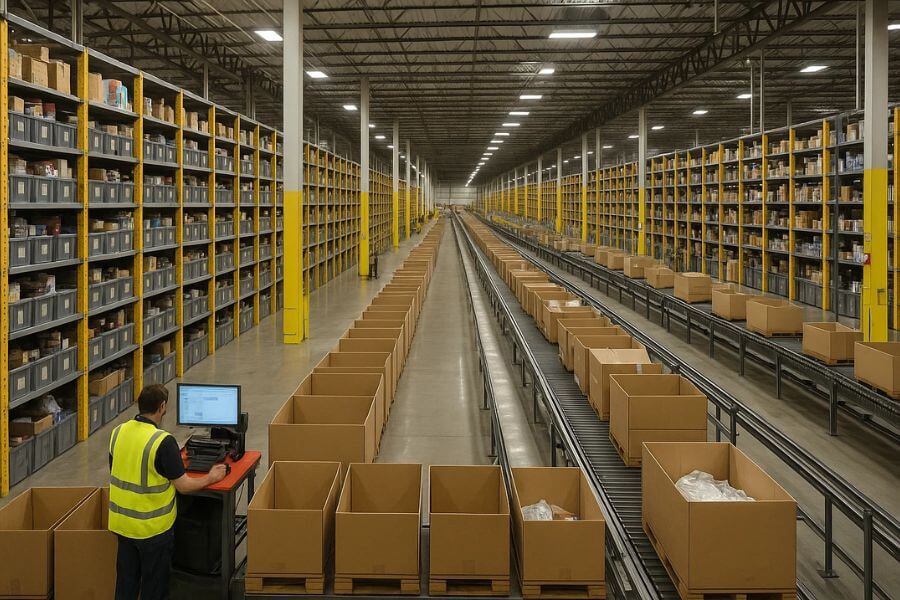Effective inventory management lies at the heart of a successful business operation. Balancing the fine line between having enough products to meet customer demand and avoiding excessive stock is a challenge that every business must navigate. In this comprehensive exploration, we delve into the intricacies of overstocking and understocking, their implications, and strategies to achieve optimal inventory levels. First, let’s take a look at what overstocking and understocking are.
What are Overstocking and Understocking?
Overstocking refers to a situation in which a business or organization holds an excessive amount of inventory or stock on hand that exceeds the current and anticipated demand from customers. In other words, it occurs when a company accumulates more goods than it can sell within a reasonable timeframe. This surplus inventory can include finished products, raw materials, components, or any items held for future sale or use.
On the other hand, understocking is a situation in which a business or organization holds insufficient inventory or stock to meet the current and anticipated demand from customers. In simpler terms, it occurs when a company does not have enough products or goods available to fulfill customer orders promptly. This shortage of inventory can encompass finished products, raw materials, components, or any items required for sale or use.
Overstocking: What Causes Inventory Surplus?
Overstocking can be caused by a variety of factors, often stemming from challenges in inventory management, demand forecasting, procurement strategies, and market dynamics.
Here are the 10 most common factors that contribute to overstocking (inventory surplus):
- Inaccurate Demand Forecasting: Poor or inaccurate predictions of customer demand can lead to overestimation, resulting in excessive inventory buildup.
- Seasonal Variability: Businesses that produce or sell seasonal products may order large quantities in anticipation of high demand, but if the demand doesn’t materialize as expected, overstocking can occur.
- Promotion and Sales Misjudgment: Overestimating the success of promotional campaigns or sales events can lead to higher inventory levels than necessary.
- Bulk Purchasing: Businesses might purchase large quantities of inventory to take advantage of volume discounts or cost savings. However, if demand is lower than expected, this can lead to overstocking.
- Supplier Delays: Fluctuations in supplier lead times can lead to delayed deliveries or the accumulation of excess inventory as a precaution.
- Changing Consumer Preferences: Rapid shifts in consumer preferences or market trends can result in unsold inventory that was aligned with outdated preferences.
- Economic Uncertainty: Economic downturns or unexpected events can lead to reduced customer spending, causing businesses to hold excess inventory they can’t sell.
- Lack of Inventory Visibility: Without real-time visibility into inventory levels, businesses may reorder items unnecessarily, contributing to overstocking.
- Ordering Errors: Mistakes in the ordering process, such as duplicate orders or incorrect quantities, can lead to more inventory than needed.
- Slow-Moving or Obsolete Items: Items that are slow-moving or have become obsolete may accumulate over time if not identified and managed effectively.
Understocking: What Causes Inventory Shortage?
Understocking can occur due to a range of factors, many of which revolve around inaccurate demand forecasting, supply chain disruptions, and suboptimal inventory management practices.
Here are the 10 most common factors that may contribute to understocking (inventory shortage):
- Inaccurate Demand Forecasting: Poor predictions of customer demand can lead to underestimation, resulting in insufficient inventory levels.
- Rapid Changes in Demand: Sudden shifts in consumer preferences, market trends, or unexpected events can lead to a mismatch between available inventory and actual demand.
- Supplier Shortages: Delays or disruptions in the supply chain can result in lower inventory levels than required to meet customer demand.
- Lean Inventory Strategies: Businesses that adopt lean inventory practices may keep minimal stock levels to reduce costs. While efficient, this can lead to understocking if not managed carefully.
- Unplanned Demand Spikes: Unexpected surges in customer orders due to external factors, promotions, or other events can lead to understocking if not adequately anticipated.
- Seasonal Variability: Failing to adjust inventory levels for seasonal fluctuations can result in understocking during periods of high demand.
- Supply Chain Complexity: Complex supply chains involving multiple suppliers or partners can introduce delays and disruptions that lead to understocking.
- Lack of Safety Stock: Not maintaining safety stock levels to account for variability in demand and supply can leave businesses vulnerable to understocking.
- Long Lead Time: Lengthy lead times between placing an order and receiving inventory can result in shortages during periods of increased demand.
- Inefficient Reordering: Inadequte inventory management practices, such as not reordering on time or using outdated methods, can contribute to understocking.
Overstocking vs Understocking: Which is Worse?
Both overstocking and understocking can have significant negative consequences for a business, and determining which is worse depends on the specific context and business goals. Let’s compare the implications of both scenarios:
Consequences of Overstocking
- Financial Impact: Overstocking ties up capital that could be invested in other areas of the business. Excessive inventory leads to increased holding costs, including storage, insurance, and maintenance expenses.
- Risk of Obsolescence: Holding onto excess inventory increases the risk of products becoming obsolete due to changes in market trends, technology advancements, or shifts in consumer preferences.
- Reduced Agility: Overstocked businesses may struggle to adapt to market changes or customer demands, reducing their ability to remain competitive and responsive.
- Markdowns and Losses: To clear out excess inventory, businesses often resort to markdowns or clearance sales, leading to reduced profit margins and potential financial losses.
- Operational Inefficiencies: Managing and organizing excessive inventory consumes time and resources, diverting attention from strategic tasks.
- Storage Costs: The costs associated with storing and maintaining overstocked inventory can strain resources and impact profitability.
Consequences of Understocking
- Missed Sales Opportunities: Understocking can result in lost sales, revenue, and potential long-term customer relationships. Customers seeking immediate satisfaction may turn to competitors.
- Customer Dissatisfaction: Delays in order fulfillment due to understocking can lead to frustrated and dissatisfied customers, negatively impacting brand reputation.
- Operational Disruption: Frequent stockouts disrupt operational efficiency and lead to rush orders, expedited shipping, and additional costs.
- Lost Market Share: Consistent understocking can lead to a loss of market share as customers turn to competitors with more reliable supply.
- Supplier Relationships: Frequent stockouts strain relationships with suppliers, affecting their willingness and ability to meet your needs.
- Revenue Loss: Unfulfilled orders result in direct revenue loss, which can be challenging to recover from.
In general, both overstocking and understocking have their own set of disadvantages and challenges. Overstocking can impact financial health, and operational efficiency, and lead to unnecessary costs. Understocking, on the other hand, can result in lost sales, damage to brand reputation, and hindered growth opportunities. Ultimately, achieving a balance between these two extremes is crucial for effective inventory management and the overall success of a business.
10 Ways a 3PL Can Help Your Business Avoid Overstocking and Understocking!
A Third-Party Logistics (3PL) provider can play a pivotal role in helping your business avoid both overstocking and understocking problems by leveraging their expertise, technology, and resources.
Here’s how a 3PL company like Logos Logistics can assist in achieving a balanced and optimized inventory management approach:
- Accurate Demand Forecasting:
3PLs often have access to advanced analytics and historical data, allowing them to provide accurate demand forecasts. By collaborating with a 3PL partner, your business can make informed decisions to prevent overstocking and understocking. - Real-Time Inventory Visibility:
Many 3PLs offer technology platforms with real-time inventory tracking capabilities. This enables your business to monitor inventory levels and make timely adjustments to avoid both overstocking and understocking. - Optimal Reorder Points:
Collaborating with a 3PL provider can help set optimal reorder points based on historical data, lead times, and safety stock requirements. This ensures that your business reorders inventory at the right time to prevent excess stock or shortages. - Safety Stock Planning:
Working with a 3PL partner can help establish safety stock levels that account for demand variability and supply chain uncertainties. This helps your business manage unexpected demand spikes and supply disruptions effectively. - Supplier Collaboration:
3PLs can facilitate collaboration with suppliers to share accurate demand forecasts and ensure timely deliveries. This prevents both understocking due to supply chain disruptions and overstocking due to overproduction. - Efficient Inventory Segmentation:
By categorizing inventory based on demand patterns, seasonality, and product lifecycle with insights from a 3PL provider, your business can implement tailored strategies for each category to avoid both overstocking and understocking. - Promotion and Seasonal Planning:
Collaborating with a 3PL to plan promotions and seasonal events based on accurate demand forecasts helps your business manage inventory levels effectively during peak periods without overstocking. - Data-Driven Decision-Making:
Leveraging data insights provided by a 3PL can help your business make informed decisions about inventory management. This supports both preventing overstocking and ensuring sufficient stock to prevent understocking. - Continuous Improvement:
A 3PL partner’s industry expertise can contribute to the ongoing optimization of your business’s inventory management strategies. Regularly analyze data, learn from experiences, and refine approaches to avoid both extremes. - Operational Efficiency and Cost Savings:
Implementing a well-balanced inventory strategy with a 3PL minimizes excess costs associated with overstocking and stockouts. Efficient operations translate to cost savings and better customer satisfaction.
By partnering with a 3PL specialist, businesses can leverage their specialized knowledge, technology, and resources to achieve optimal inventory levels, enhances supply chain efficiency, and prevent the challenges associated with both overstocking and understocking.
Conclusion
Striking the right balance between overstocking and understocking is a continuous endeavor that requires a deep understanding of your business, market dynamics, and customer behavior. While both scenarios come with their own set of challenges, a data-driven approach, supported by technology and effective inventory management strategies, can help you achieve optimal inventory levels. By navigating the intricacies of inventory management, businesses can enhance customer satisfaction, reduce costs, and position themselves for sustainable growth in a competitive marketplace.
Overstocking & Understocking FAQs
Are there industries more prone to overstocking or understocking issues?
Industries with seasonal demand shifts, fashion trends, perishable goods, and rapidly evolving products are often more vulnerable to both challenges.
Can a business suffer both overstocking and understocking simultaneously?
Yes, as different product categories within a business can experience varying demand patterns, leading to simultaneous overstocking and understocking.
How do overstocking and understocking impact a company’s operational efficiency?
Overstocking increases storage costs and complicates warehouse management, while understocking disrupts order fulfillment and may lead to expedited shipping costs.
Is it better to err on the side of caution and have slightly more inventory (overstock) or keep lean inventory (understock)?
Striking balance between the two is ideal but if we were to compare them directly, the answer is that it depends on the business. A business would either be willing to accept increased costs due to overstocking or lose revenue due to understocking.
Can overstocking and understocking affect a company’s relationships with suppliers and partners?
Yes, overstocking can strain supplier relationships due to order cancelations or renegotiations. Understocking can strain partnerships due to unmet commitments.
What are some real-world examples of businesses facing challenges with overstocking and understocking?
For example, a fashion retailer might face overstocking after a trend fizzles out, while a tech company might face understocking of a hot-selling gadget.
How do overstocking and understocking impact a company’s long-term growth prospects?
Both extremes can hinder growth. Overstocking ties up resources, limiting investment, whereas understocking leads to missed sales and customer attrition.
What strategies can a business adopt to manage overstocking and understocking during seasonal fluctuations?
Collaborate with suppliers for flexible ordering, adjust safety stock levels, and employ agile inventory management practices during peak seasons.
Are there any industry best practices to strike a balance between overstocking and understocking?
Regularly review and adjust reorder points, maintain clear communication with suppliers, and utilize data analytics to make informed decisions.











